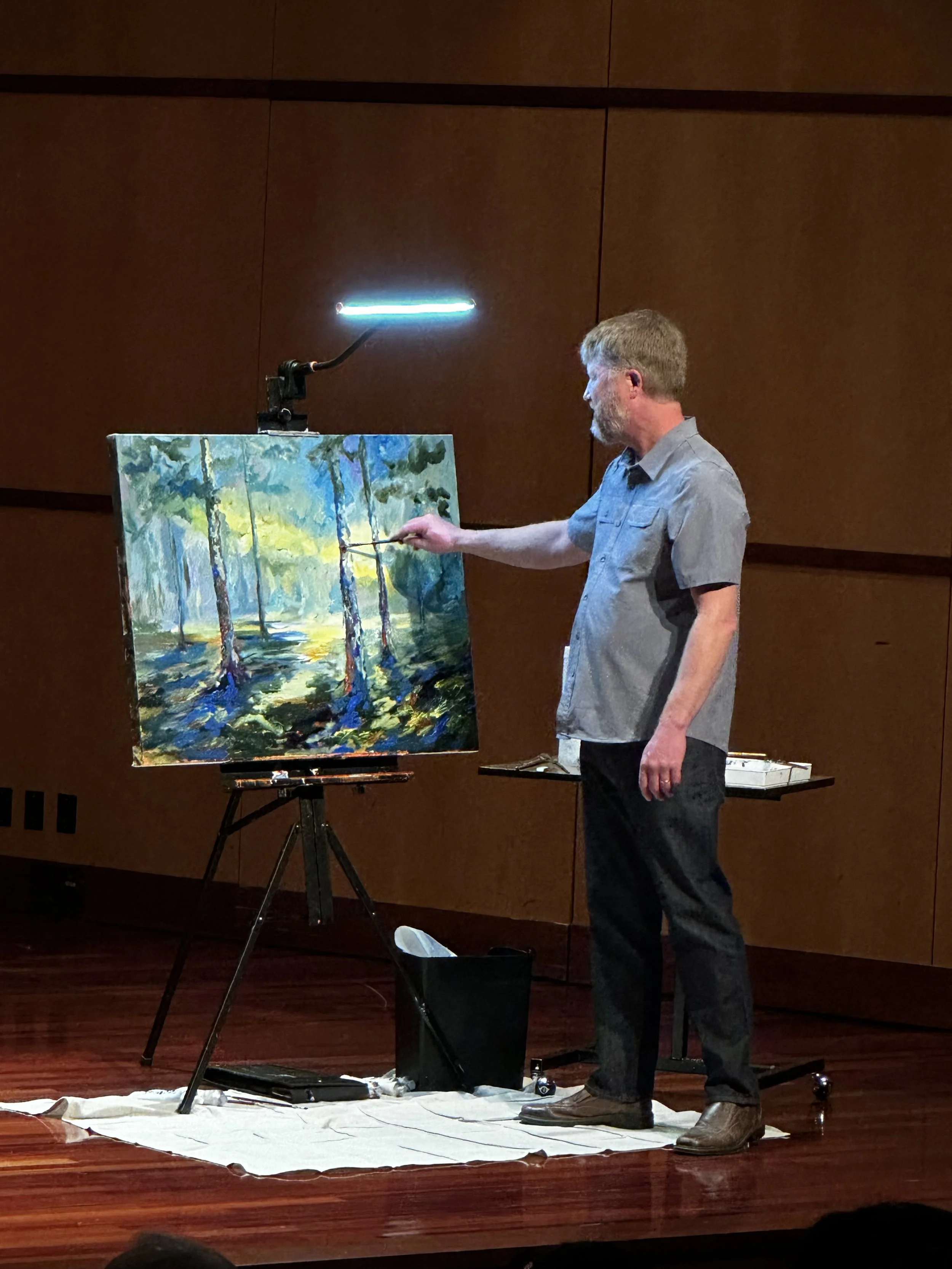A Multimodal Mural
Modern life can be a persistent multimedia experience that rarely asks for permission. Consumers are constantly bombarded with a variety of contexts and left to interpret these intangible worlds alone. Art should serve as an anchor of reflection and connection (both between mediums and ourselves), and yet the digital age often casts human perspective adrift in a sea of content. How can we manage to recenter?
In the Music Recital Hall on Jan. 26, Santa Clara students were thoroughly reminded of the power of community entertainment; appreciating masters trade not only their craft, but a necessary openness and authenticity.
Joined by the celebrated visual artist Mike Stevens, The Bill Stevens Trio (consisting of Bill Stevens, a Senior Lecturer in the music faculty, on the piano, Kristen Strom on saxophone and Dan Robbins on bass) presented a remarkably free-flowing performance; weaving together learned disciplines and shared histories on stage.
Mike Stevens, brother to beloved professor Bill Stevens, paints onstage while the trio performs. Photo by Ivy Wu
Of course, there was the reunion of two brothers, who grew up exploring visual and auditory arts in their North Carolinian home, now poised and ready to erupt on opposite ends of a California stage.
Speaking to the origins of their collaboration, Stevens recalled how in his old three piece band, “The guitarist, a friend of mine named Chip, was like, ‘Y’know what Bill? Let’s get your brother to paint with the band.’ How many jazz bands have a painter? People would get drawn into watching the painting happen, get drawn into that creative space and then experience the music in a way that they hadn’t known how to experience. So it became a way in for some listeners.”
The whoops and hollers of students as Professor Stevens uttered his first syllable onstage honored his position as an educator; one valued for a methodology of sincerity rarely matched in academia. As Stevens highlighted, the administrative shift towards free student tickets for these concerts is surely another cause for celebration. The hall was positively packed with young adults, rabid for a genre whose musical lineage dates back far before their time.
All contributing artists were ceaselessly smooth as they glided through a maze of standards, Mike Stevens capturing the lush sound on canvas as he crafted an evolving forest of paint. As with any group of great musicians, it felt as though a casual seance was taking place, simultaneously communicating through an unseen form while cracking jokes on the side. Strom mentioned that Stevens called his original composition “spooky jazz,” much to his dismay.
“I really feel that the listening presence of the audience changes the music. Our nervous systems don’t exist in isolation,” said the Professor, reflecting on a musician's relationship to a larger community. “I feel like it speaks to a deep need that we have to connect with other people in that way and music and artmaking can be a way of doing that…it is about that spontaneous creativity. We’re not just performing something that you could listen to a recording of. The deeper the audience goes, the deeper the music goes.”
The spontaneity at hand was electric; a call and response successfully occurring both on stage and with an enraptured crowd. At one point, Kristin Kusanovich of the dance department suddenly joined the group on stage from the audience, whirling across the venue and crumpling to the lilting “Corcovado.” The room had changed for the better.
After the final standard had ceased, the brothers triumphantly stood side by side, framed by their tools of choice. A set of strings and hammers whose comfort echoed far into the night. A couple brushes and a blank space, now made verdant by the mind.
To stay updated on future shows and campus culture events, be sure to visit the Events Calendar at events.scu.edu.
